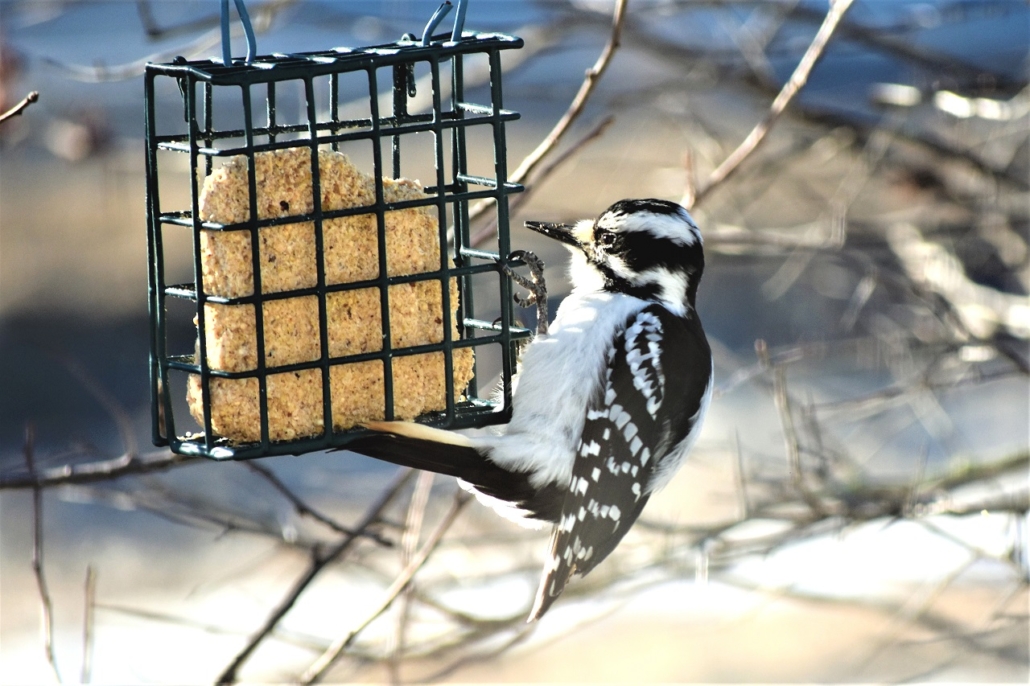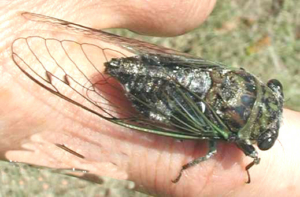FOR YOUR HEALTH – Healthful School Lunches: What Parents Need To Know
/0 Comments/in For Your Health/by Website Editor (NAPSI)—The healthfulness of school lunches is one of the top three parental concerns of this school season, according to a recent survey conducted by OnePoll.
(NAPSI)—The healthfulness of school lunches is one of the top three parental concerns of this school season, according to a recent survey conducted by OnePoll.
The survey covered a number of parental worries for their school-aged kids, including their safety, whether they’ll make new friends, quality of education, and homework load. However, 44 percent of respondents prioritized healthful school lunches after the quality of their children’s teachers, and ahead of the cost of school supplies.
Taking a deeper look into school lunches, the survey also found that the average child buys lunch about three times a week and, while healthful eating is a top concern for parents, 36 percent admitted they don’t typically know what their child eats at school.
Making Good Nutrition A Part of Kids’ Everyday Life
What with pizza, mystery meat, and the variety of fried options offered at school, most parents say their child eats healthiest when at home or when they pack their kids’ lunches themselves. Unfortunately, the survey also found that 45 percent of parents admit that they don’t always have time or have forgotten to prepare a sack lunch for their kids to take to school.
“Parents have enough to worry about and what their kids are eating in school should be the last thing they have to think about. Yet, unfortunately, parents have deep fears about what their kids are eating in lunchrooms across the country,” says Dr. John Agwunobi, pediatrician, co-president and Chief Health and Nutrition Officer at Herbalife Nutrition. “We all have a responsibility to ensure our kids are getting the most nutritious meals possible, and I applaud school districts around the country that are working with parents to improve both the nutrition levels and taste of school meals.”
According to the survey, only about a quarter of parents know both the nutrient and calorie value of the foods their children eat for lunch, whether homemade or purchased.
The Importance of Knowing Nutritional Value of Food
Building a balanced meal—including dairy, vegetables, fruits, grains and protein—doesn’t have to be complicated or take a long time. What is most important is making sure that the calories your children consume are jam-packed with the nutrients they need for energy and growth—a concept known as “nutrient density.” Emphasizing nutrient-dense foods is a great way to rethink how you pack your kids’ lunches—and how you plan meals at home, too.
Simply put, nutrient-dense foods are those that pack a lot of nutrients relative to their calorie cost. When choosing between two food items with the same calorie amount, one food choice could provide your body with the protein, fiber, healthy fats, vitamins or minerals it needs every day, while another choice may provide empty calories from sugar and saturated fat with no other significant nutrients.
Ideally, a meal should be made up of mostly nutrient-dense foods, with fewer “calorie-dense” foods—such as fats and sugars—which are high in calories relative to the nutrients they contain.
When parents do pack a lunch, the survey reported, tasty food is their top priority (64 percent), as well as foods that parents know their child will eat (64 percent), followed by healthy options (62 percent). Some ideas for nutrient-packed, healthful foods that most kids will enjoy include omega-3-rich tuna fish, sweet and crunchy carrots, strawberries packed with potassium and vitamin C, and nuts, which can replace chips to satisfy cravings for salty, crunchy items. However, the survey also found that the peanut butter and jelly sandwich continues to be the staple menu item most parents pack for their children. To make it more nutrient dense, parents can simply replace the white bread with whole grain bread and use a low- or no-sugar-added peanut butter and jelly, to make the sandwich more healthful, with better nutritional value.
Learn More
For more facts and tips on healthful and tasty options for yo`ur kids’ lunches, visit www.iamherbalifenutrition.com.
I’M JUST CURIOUS: Ticks and bumps
/0 Comments/in I’m Just Curious/by Debbie Walker by Debbie Walker
by Debbie Walker
Ever notice how sometimes things are easier when you put them in your own words rather than maybe the appropriate one? You know, bring them down to your terms.
I think I do it out of a healthy disrespect for the real terms, and sometimes because my words are just shorter. I’ve done some of that here.
I made a long put-off trip to the dermatologist to have a little mole thing on my forehead looked at. They told me just by looking at it that it was a basil cell carcinoma, lot of words for cancer. Instantly, that thing reminded me of being in Maine, come in from the woods with a tick on you and all you want to do is get it off you! Well my immediate reaction was: GET THAT THING OFF ME NOW! This little mole thing was my “tick” and I wanted it gone now!
Well, beside the little tick I had a bump on my upper left leg. It had never been discolored; it had never burned, itched, hurt, changed colors, nothing. However, it had started to grow, and it seemed to be forming groupies around it. So, hey, I’m here, I might as well ask him what kind of thing it was. Well you know how it goes, almost like with your car, it could be this or it could be this, usually it is the more expensive one but sometimes you get lucky. So, the doc did his little biopsy of both tick and bump.
Tick test came back next day just what they said it was, and it was going to have to come off. “I’m ready now.” However, we (they) were waiting on the bump’s biopsy that it turns out had to be sent away. Oh yeah, I’m a little nervous now, but better safe than sorry.
The “tick” was no big deal; they took that off in a matter of minutes and a few stitches. But it seems that the “bump” was going to send me to a specialist, it was a little on the rare side and had a name I think includes all the letters of the alphabet in it. So, I was sent off to Moffitt Cancer Center, in Tampa. Probably means nothing to you guys but this place is top of the line all the way!
That little bump that never did anything but grow to about the size of a quarter was going to require an eighth-inch by six-inch cut down to the muscle to get rid of, I’d have one layer of stitches and one layer of staples. This cancer is rare and has a 95 percent success rate. AND, for it to be considered not successful only means it would grow back in the same spot. Now as cancers go, I consider myself very lucky.
We all do it; we all put things off, “ah, that isn’t nothing.” I will admit that for a while I had an idea what the tick was and even then, put it off, lack of money, insurances, time from work, etc. As for the little bump, it looked like the most harmless thing in the world and as I said, never gave a sign it being anything other than a bump on the skin. But if you think about it, what was the bump doing there, I didn’t have one anywhere else?
Please take this seriously. My tick is long gone, and my bump was removed December 23, 2008. Yup, I am making fun of them, that healthy disrespect I was talking about, but this is serious. If you have ticks or bumps or whatever word you decide to call them, do yourself and your family a huge favor and go now. Don’t wait. If it turns out to be nothing, go celebrate. If it is something deal with it. You wouldn’t leave a tick on there knowing it was there, would you?
This is one time when I wish my curiosity had won over sooner!
Thanks for reading and if this rings a bell to you: CHECK IT OUT!
Contact me at dwdaffy@yahoo.com. We’ll just call this my public service announcement!
REVIEW POTPOURRI: Meyer Davis plays the Twist
/0 Comments/in Review Potpourri/by Peter Cates by Peter Cates
by Peter Cates
Meyer Davis plays the Twist
Cameo 1014, vinyl LP, recorded 1960.
Band leader, Meyer Davis (1895-1976) ran a multi-million dollar empire of dance music several decades for coming-out parties, and seasonal galas hosted by the folks living in West Palm Beach, Newport, the Bahamas, Houston’s River Oaks, Greenwich, Paris, and the Mediterranean Coast, and for whom money meant a rich full life to too many of them.
At 18, Davis had enrolled in law school while earning $90 a week leading a group of musicians at evening gatherings. His talent and business skills proved a better career choice than becoming a lawyer. His bands played at seven presidential inaugural balls right up to JFK, and they performed for the English nobility, including King George V.
This album of music for Cameo-Parkway – the same Philadelphia label that produced Chubby Checker’s original hit record, The Twist, – provided spiky, captivating renditions of that song, Mack the Knife, Rock Around the Clock, I Could Have Danced All Night and other selections. Davis utilized the most brilliant musicians, creating a record that mirrored high society get-togethers during the early 1960s very evocatively.
Hobbies included playing chamber music with his brother-in-law, the great conductor Pierre Monteux, and collecting first editions of Lord Byron’s books and other memorabilia with his wife.
SOLON & BEYOND: Smith family holds 69th reunion
/0 Comments/in Solon & Beyond/by Marilyn Rogers-Bull by Marilyn Rogers-Bull & Percy
by Marilyn Rogers-Bull & Percy
grams29@tds.net
Solon, Maine 04979
Good morning, my friends. Don’t worry, be happy!
Was so very happy to receive the following letter from Charlotte S. Withee about the following Smith Family 69th reunion.
“The family of the late Henry and Gertrude (McLaughlin) Smith held its 69th reunion on July 29, 2019, at Moores Pond in Lexington, Maine. The descendants of Harry Smith were the host.
There were 48 members and guests attending. The family enjoyed spareribs and hamburgers provided by Lester and Gail Smith. Other members provided salads and desserts. Everything was delicious..
ELMER’s family – none attended.
HARRY’s family – Lester and Gail Smith; Jack Theriault; Sylvia and Amelia Brenna; Mike and Margi Theriault; Brian and Susan Smith; Timothy and Emily Gauthier; Mackenzie Smith; Stephen and Elizabeth Smith; Bradley Smith and Kayla Linkletter, children Noah and Owen; Lois and Jeff Smith. Lester and Gail Smith’s guest Wayne and Naomi Smith.
AGNES’ s family – None attended.
OLIVER’s family – Craig L Smith; Judy E. Smith; David Smith and guest Marcia Hewett; Sheila (Smith) and John Callaway; Janice Gorman and daughter Jayda Laney; Russell and Kimberly Smith and children Alex; Bradley; Cassie; Cayden; Deanna Gorman.
GERTUDE’s family – Diana (Merry) Michaud; Monica Atwood and child Sage Bertone and Monica Atwood’s guest Shane Davis and his children, Camron , Elijah, Nick and Kaelyn; Rosemary; John and Sharon (Mellows) Ziacoma; Jennifer Withee and Andrea Smith; Charlotte and Ralph Withee.
CECIL’s – None attended.
CLARISSA’s family – Diana Gerrard Tardiff; Danal Gerrard; Darrell Gerrard; Darcie Verrill and her guest David M. Whitney; Nancy G. Smellie; Joan K (Paine) Steele.
VINCENT’s family – None attended.
Attending from out of state: Russell Kimberly Smith and children, from New York; Sylvia and Amelia Brennan, from Pennsylvania; Sheila and John Callaway, from California.
The oldest member was Rosemary (Mellows) Merry, age 86, and the youngest was Bradley Smith’s and Kayla Linkletter’s son Noah, age 1.”
There is a Bag Sale this week at the Embden Community Center. All clothing men’s, women’s and children, $1.50 for small bag and $3 for a large bag. Hours are: 10 a.m. – 12:30, p.m. Friday and Saturday, 10 a.m. – 3 p.m. The lending library is open while the Thrift Shop is open. Thanks go out to Carol Dolan for this important information and….more thanks go out to her for the following information!
New Portland Library events:
Pie Social – Come join us for our annual Pie Social at New Portland Community Library August 14, at 5:30 – 7 p.m. Yummy desserts with friends!
Bake Sale at Tindall’s Store on August 17 from noon – 4 p.m. Lots of home baked goodies to satisfy your sweet tooth! Tindall’s Store is located in North New Portland.
Aging Well with Technology class, September 5, 1:30 – 3 p.m., at the library. This free class, offered by the National Digital Equity Center, will assist participants to connect through basic technology, protect your digital presence, use technology for better health and get what you need online.
Again, my many thanks for your generous, nice people from ‘Beyond’ for sending me the above interesting news to share with our readers. I can’t tell you how much I appreciate it!
And now again, I’m asking those of you who live in Solon if you won’t please send me your news? It doesn’t take long to send an e-mail, or send a written letter by mail! I have to get it by the Sunday before it comes out in the next Thursday paper. I will even come to your home and pick it up if you don’t live too far away!
And now for Percy’s memoir entitled, Understanding: The troubles that beset you along life’s winding road are sent to make you stronger to share another’s load. We cannot share a sorrow if we haven’t grieved a while, nor can we feel another’s joy until we’ve learned to smile! Sweet mystery of music, great masters and their art, how well we understand them when we’ve known a broken heart! Let tyrants lust for power, sophisticates be wise, just let me see the world, dear God, through understanding eyes. (words by Nick Kenny.)
It’s Time to #StopRxGreed: AARP on the front lines fighting soaring prescription drug prices
/0 Comments/in AARP Scam Alert/by Website Editor Americans pay the highest drug prices in the world and, over the last ten years, prices have continued to skyrocket.
Americans pay the highest drug prices in the world and, over the last ten years, prices have continued to skyrocket.
In Maine, 62 percent of Medicare beneficiaries have one or more chronic diseases, many of which require patients to take multiple medications. In some cases, prescription drugs represent the only defense Mainers have against debilitating pain and their fight against life-threatening conditions like heart disease and cancer. In 2017, retail prices of some of the most popular medications older Americans take to treat everything from diabetes to high blood pressure increased by an average of 8.4 percent. That is four times the rate of inflation.
No one should have to choose between food and medicine, but some Mainers are doing just that.
The truth is that drug companies make a fortune in profits from older adults and hardworking Americans. The tens of billions of dollars drug companies spend on advertising each year is shameful, and results in drugs being more expensive. Drugs don’t work if people can’t afford them. That’s why AARP launched a national campaign this year urging federal and state policymakers to Stop Rx Greed by cracking down on price-gouging drug companies.
During the legislative session, AARP Maine worked with state lawmakers to pass a package of bills that will lower prices and improve accessibility to medications which thousands of Mainers need to stay healthy. Maine’s legislators clearly recognized that prescription drug price gouging is not a Democratic or a Republican problem. This issue is about fighting for people’s lives, and putting people before profits.
Maine is once again leading the way, but now we need Congress to follow that lead. We urge Senators Collins and King to work with their colleagues to pass bipartisan legislation to lower prescription medication prices across the country.
The pharmaceutical companies have made it clear that they intend to fight hard, but we must fight harder. While we celebrate our state win in Maine, we must keep the campaign going in the national arena. Please take a moment to call 1-844-226-7032 and urge Maine’s Senators to Stop Rx Greed. Now.
AARP Maine is committed to working with our lawmakers to enact solutions that will provide long overdue relief not just for older Americans, but for all consumers. To learn more about AARP’s Rx advocacy work and to make your voice heard, visit www.aarp.org/rx. If you are willing to work with our Maine office to bring down prescription drug prices, or if you have your own Rx story to share, please email me@aarp.org. We look forward to hearing from you.
GARDEN WORKS: Not for the birds! Protect your berries from aerial assaults
/0 Comments/in Garden Works/by Emily Cates
An example of bird netting.
 by Emily Cates
by Emily Cates
“Swoop! Dive! Flap!” go their wings as they raid my beloved berry patch, their beaks voraciously plucking choice berries with no regard to how many backbreaking hours I’ve spent growing them. As I attempt to harvest the leftovers and shoo them away, the birds whiz by and release their droppings in what seems like a sinister game to deter me from “their” buffet. I can’t help but feel under attack!
Does this sound familiar to you? Most berry growers at some point have experienced competition from our flying feathered friends. This article was written for those of us who need tips on how to protect berries
from hungry birds, or at least to keep their damage to a minimum. The tricks up our sleeves include visual and auditory deterrents, netting, and other ideas that will hopefully help a hardworking gardener keep her sanity.
I’ll start with the least expensive option— visual deterrents. Materials that reflect sunlight and move around in a breeze may create an illusion of fire and frighten a bird away. Aluminum pie pans strategically hung around the garden work accordingly. “Flash tape”, a long strip of coated metallic material, has been quite effective in my garden – even for cedar waxwings. It is unrolled and strung slightly twisted from one side of the garden to the other in several parallel rows, or dangled from branches. FEDCO and Johnny’s carries it (and most of the products mentioned in this article), though a thicker, more effective version is found online.
“Scare balloons,” faux owls, and other predator facsimiles may or may not work as well as the real thing, and should be moved around often for maximum effect.
Now – thunderous drum roll, please! There is a product on the market that uses explosions to deter birds. No kidding! If you (and your neighborhood) like loud noises and bright flashes, it might be perfect for you. This thing-that-goes-boom attaches to a propane tank and intermittently blasts off at random, unpredictable intervals, terrifying every living creature in its vicinity. Let me know how it works for you.
Since birds such as cedar waxwings are bold and descend upon the berry patch in groups of several birds, they are especially difficult to control. And, no, you can’t just wait there for them with a .22, since songbirds are protected species. As annoying as it sounds, you actually have to place a barrier between the berries and the birds. Behold the bird netting! If you have just a few plants, it shouldn’t be a great big deal. More than a few, however, and it could become expensive. Just remember, though, that this might be the most effective method.
Another way to keep birds out of the berry patch includes planting native trees and shrubs that they prefer away from the garden. The idea is that they will be attracted to these instead of the garden, though I wonder if this will actually summon all the birds in the neighborhood to your spot. Serviceberries, as delicious as they are, can be especially problematic – as the cedar waxwings will decimate them before they’re even ripe and then move on to the berry patch. However, I’ve found that mulberry trees produce so many mulberries that there are usually enough to share.
Whatever deterrents are employed, it’s important to remember to use them before the berries begin to ripen. Once birds are established in the garden, they are harder to get rid of. If you need advice, the folks at the Maine Department of Inland Fisheries and Wildlife are a good place to call.
However, we enjoy our berries, may they NOT be for the birds!
SCORES & OUTDOORS: The strange summer of 2019
/0 Comments/in Scores & Outdoors/by Roland D. Hallee by Roland D. Hallee
by Roland D. Hallee
Has this been a crazy summer, or what?
The summer of 2019 may go down as one of the more mysterious of recent years. We had a bumper crop of black flies and mosquitoes, last week we covered the decline in the number of bats, the usual suspects appeared at our bird feeders – with a few exceptions, there has been a decline in the activities of red squirrels, chipmunks and gray squirrels, and even the garden isn’t cooperating.
Frequent and heavy rains through May and June, with a July and August that has been relatively dry. Just to show you how the beginning of summer shaped out, we actually ran the furnace, – and air conditioning – on the same day this year, ironically, July 4. That is a little bizarre.
At the bird feeders, we have had the annual appearance of black capped chickadees, gold finches, nuthatches, the occasional tufted titmouse, blue jays, crows and woodpeckers. Although they were slow to arrive. But no rose breasted grosbeaks, cardinals or Baltimore orioles earlier in the year.
We usually have two chipmunks scurrying around, where this year we have had only one. Apparently, it is safe to assume its partner met with some sort of tragedy. The red squirrels have not been seen and we have only observed one or two gray squirrels, where in most years it is a constant and never ending battle with them at the bird feeders.
Again, as mentioned last week, we have seen no bats.
The garden is doing OK, but some of the crops, which I have been growing for years with no difficulty, are looking like a bust this year. Broccoli has not flowered, and my cauliflower has produced only two florets. The green peppers are stunted, and have never really grown to any height, and bearing no fruit. The Brussel sprouts never got off the ground, and the squash are way behind where they should be this time of year. But, on the positive side, the string beans, tomatoes, cucumbers and lettuce are doing fine.
However, on the other hand, we have rag weed growing like gang busters in places where we have never had them before, the “junk” trees in my backyard have reached an all-time high, despite some cut back last spring, and the Virginia creeper vines have completely covered the wood pile and storage shed, and taken over the entire backyard along the fence. Where they came from is beyond me, but they have been proliferating abundantly over the last couple of years, again despite some major cutting in the fall.
The only creature that seems to be on schedule is the cacadae, which came right on cue on July 26. As you know, that is the little bug that creates that loud buzzing sound on the hot summer days, which farmers for centuries have credited with predicting the first killing frost of the fall.
Folklore has it that the first crop killing frost will occur 90 days from the day you first hear the sound, following the next full moon, which this year will be November 12. I hope we don’t have an early winter like last year, because it is highly unlikely the first frost won’t come before that date.
Also, it is mid-August and we haven’t seen any hickory tussock caterpillars – the white fuzzy ones with the black stingers, no Monarch butterflies, but plenty of harvestman spiders – what we call daddy longlegs. They seem to have arrived a little early this year.
Here’s another, bees! We have seen only a handful of bumble bees, no yellow jackets or hornets.
Most of these are nature’s way of letting you know what kind of winter to expect. Where bee hives are built is usually an indication of the snowfall to expect. The higher the hives, the more snow to expect, according to folkore.
What remains to be seen is the wooly bear caterpillar. It’s still early for them. They usually appear in September. They are the little black and rust-colored hairy caterpillars that predict the severity of the winter. The longer the rust band on the body, the milder the winter, and vice versa. Last year, I can say I only saw a handful of those, where you normally see them everywhere, especially trying to cross a road. We’ll have to wait and see what happens with them.
We’ll sit back and see how September, and the beginning of fall shapes up. I wouldn’t mind seeing an Indian summer.
Roland’s trivia question of the week:
In the NFL, how wide are the goal post uprights?
GROWING YOUR BUSINESS: Dealing with angry customers
/0 Comments/in Growing Your Business/by Dan Beaulieu
 by Dan Beaulieu
by Dan Beaulieu
Business consultant
Look, it’s going to happen. Someone once said that if you don’t make mistakes, you are not trying hard enough. So, yes sometimes you will make a mistake, you will screw something up that will make your customer upset and possibly even angry. And then there are sometimes that because of some misunderstanding the customer is angry with you and it’s not even your fault. And then there are those most challenging times when the customer is just angry, and he is unfairly taking it out on you. How do you handle that? How you handle these situations will define how truly outstanding your company is.
Here are a few rules for handling an angry customer that will work every time:
- Stay calm, at all costs stay calm. Do not under any circumstances lose your cool. Remember cool heads always prevail. Do not fall to the temptation of talking back, or defending yourself, at least at this time.
- Smile. No, not a stupid idiotic grin, but rather a friendly calming smile, that will demonstrate to your customer, that it’s okay, you come in peace and you want to gracefully solve the problem.
- Use the customer’s name, and in most cases, this means using Mr. or Mrs. Or Miss. or Ms. Do not use their first name unless you have permission. There is something calming about hearing your own name said calmly and politely.
- Listen carefully, very carefully to make sure you understand exactly what it is that the customer is unhappy about. Do not interrupt at this point. Let the person tell you in her own way, taking his own time what the problem is. Get the complete story from the customer.
- Repeat what they told you. Once the customer has finished telling what the problem is, play it back to her in your own words. Pausing while relating to get her affirmation that you have a complete and clear understanding of what she is unhappy about.
- Make sure that you now both agree as to what the issue is. Make sure you are both clear on this.
- Ask the customer what he would like you to do about it? How can you fix this problem to her satisfaction?
- Agree to fix it. If it is a reasonable request, even if you are not one hundred percent to blame, if you can possibly fix the problem and repair the relationship then, by all means do it. Agree to fix the problem if you can.
- And if you are not one hundred percent on the wrong side of this issue. Still fix it. Not only fix it, but fix it to the customer’s satisfaction.
- Make reparations. If you were truly at fault, or mostly at fault, then not only fix the problem but add something extra to make up for your mistake. This will go a long way towards strengthening your relationship with this customer.
- Remember always, that the important thing is to retain the customer, the last thing you want to do is win the battle and lose the war. You want to retain the customer at all costs. It has been proven that unhappy customers love telling “horror stories” about bad service. In fact, statistics show that service horror stories are repeated so frequently that often over 250 people will hear them. Not a good thing. Especially if you are doing business in a small community.
- On the other hand, happy customers love to brag about getting great service. It makes them feel so good and so smart for finding a great company that delivers super services and products that they will tell everyone they know about it… and if your smart you’ll make sure that the company they are bragging about is yours! That’s a great way to grow your business.
FOR YOUR HEALTH – New Study Uncovers ‘Hidden’ Epidemic In Health Care: Hospital Drug Diversion
/0 Comments/in For Your Health/by Website Editor  (NAPSI)—Hospital drug diversion, in which health care workers divert opiates and other controlled substances away from patients for personal use or sale, is a largely underdiscussed challenge. To better understand health care diversion perceptions, behaviors and solutions, the BD Institute for Medication Management Excellence commissioned KRC Research, a global public opinion research consultancy, to conduct a national survey of more than 650 hospital executives and providers. The findings, released in a new report, were eye opening.
(NAPSI)—Hospital drug diversion, in which health care workers divert opiates and other controlled substances away from patients for personal use or sale, is a largely underdiscussed challenge. To better understand health care diversion perceptions, behaviors and solutions, the BD Institute for Medication Management Excellence commissioned KRC Research, a global public opinion research consultancy, to conduct a national survey of more than 650 hospital executives and providers. The findings, released in a new report, were eye opening.
1. The Not-In-My-Backyard (NIMBY) Effect
The survey showed that health care executives and providers may be in denial about substance use among hospital employees and the prevalence of hospital drug diversion. While 85 percent of providers express concern about diversion, and 50 percent report they have observed suspicious activity, fewer than 20 percent believe diversion is a problem in their own facility. Further, despite evidence to the contrary, 26 percent of executives and 29 percent of providers surveyed believe substance use disorder is less prevalent among hospital employees than in the general population.
2. Workplace Stress May Be a Related Issue
In the survey, 58 percent of nurses and 52 percent of anesthesiologists say their jobs are highly stressful. Among providers, 78 percent know a peer who may be stressed “to the breaking point.” And, though 74 percent of providers are comfortable seeking help to manage stress, only 39 percent of all respondents have actually sought assistance.
3. Better Training Could Help Solve the Problem
Nearly 60 percent of providers said they have either taken a diversion training course, talked about it in a work meeting, and/or received information from their hospital. However, 40 percent report they have not had any formal training, and more than a third have not received diversion information from their hospital or discussed it at work. Among those who had not received any training or communication, 60 percent would like that to change.
4. Hospitals Need Better Technology to Detect Diversion
In the survey, 32 percent of executives say they are spending too little on specific measures, such as tools that deliver more accurate data to reduce false positives, machine learning, advanced analytics, and mandatory diversion training. However, the vast majority of executives and providers believe that, with enough resources, they can mitigate diversion risk.
This new report—“Health Care’s Hidden Epidemic: A Call to Action on Hospital Drug Diversion”—should not be the last word on diversion. Rather, it should spark a national conversation, spur much-needed research, and ultimately lead hospitals and health systems to adopt comprehensive diversion prevention programs. Through technology, communication and training, cultural shifts and other means, diversion risk can be addressed in a meaningful way.
For more information, including the report, a resources guide and other assets, please visit BD Institute for Medication Management Excellence at www.bd.com/diversion-report.
Interesting links
Here are some interesting links for you! Enjoy your stay :)Site Map
- Issue for May 16, 2024
- Issue for May 9, 2024
- Issue for May 2, 2024
- Issue for April 25, 2024
- Issue for April 18, 2024
- Issue for April 11, 2024
- Issue for April 4, 2024
- Issue for March 28, 2024
- Issue for March 21, 2024
- Issue for March 14, 2024
- Issue for March 7, 2024
- Issue for February 29, 2024
- Issue for February 22, 2024
- Issue for February 15, 2024
- Issue for February 8, 2024
- Issue for February 1, 2024
- Issue for January 25, 2024
- Issue for January 18, 2024
- Issue for January 11, 2024
- Issue for January 4, 2024
- Issue for December 21, 2023
- Issue for December 14, 2023
- Issue for December 7, 2023
- Sections
- Our Town’s Services
- Classifieds
- About Us
- Original Columnists
- Community Commentary
- The Best View
- Eric’s Tech Talk
- The Frugal Mainer
- Garden Works
- Give Us Your Best Shot!
- Growing Your Business
- INside the OUTside
- I’m Just Curious
- Maine Memories
- Mary Grow’s community reporting
- Messing About in the Maine Woods
- The Money Minute
- Pages in Time
- Review Potpourri
- Scores & Outdoors
- Small Space Gardening
- Student Writers’ Program
- Solon & Beyond
- Tim’s Tunes
- Veterans Corner
- Donate








